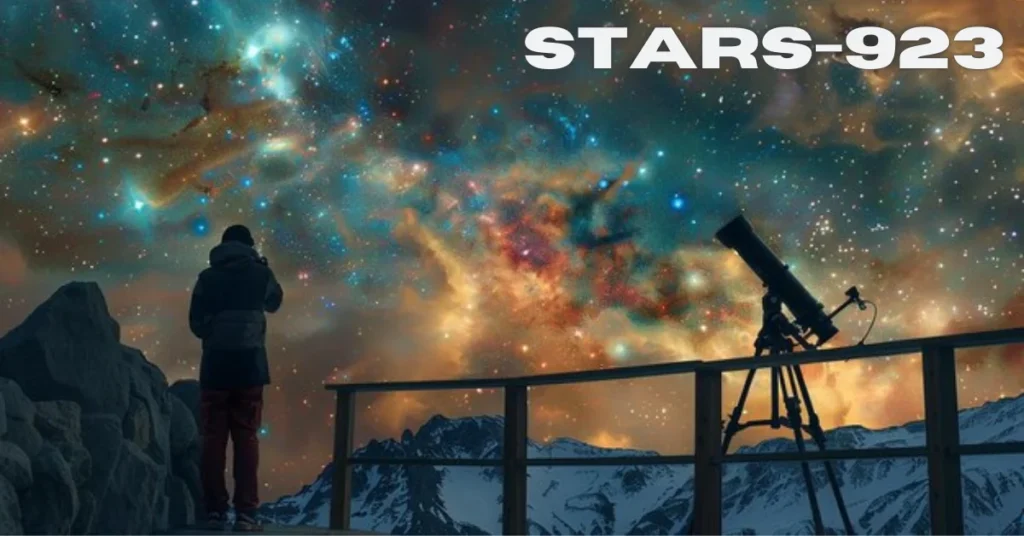Introduction to Stars-923
The universe is a vast and mysterious expanse, filled with wonders that ignite our curiosity. Among the countless celestial bodies scattered across the cosmos, one star has recently captured the attention of astronomers and space enthusiasts alike: Stars-923. This intriguing star stands out not only for its unique characteristics but also for what it could mean for our understanding of the universe. As we delve deeper into this cosmic enigma, prepare to uncover secrets that challenge existing knowledge and inspire new avenues of exploration in space research.
The Discovery of Stars-923
The journey to discovering Stars-923 began with a groundbreaking observation. Astronomers utilized advanced telescopes equipped with cutting-edge imaging technology. They aimed their sights towards unexplored regions of the cosmos.
In early 2023, they spotted an unusual light pattern in a distant galaxy. The brightness and color suggested something extraordinary was lurking there. Further analysis confirmed their suspicions; it was no ordinary star—this was Stars-923.
As data poured in, researchers noted its unique spectral signature. This indicated complex chemical compositions not seen before in other stars. The discovery sparked excitement across scientific communities worldwide.
Scientists quickly mobilized resources for deeper examinations. Collaborations formed, uniting astronomers from various institutions eager to unlock the secrets of this celestial wonder. The findings hinted at vast implications for our understanding of stellar evolution and cosmic phenomena.
Characteristics and Composition of Stars-923
Stars-923 exhibits a fascinating blend of characteristics that set it apart in the cosmic landscape. Its immense size and brightness captivate astronomers, making it one of the most intriguing celestial objects discovered to date.
The composition of Stars-923 reveals a rich tapestry of elements. Hydrogen and helium dominate, but traces of heavier elements hint at complex stellar processes. This unique mix provides insights into its life cycle and formation history.
Spectroscopic analysis shows varying temperatures across its surface, contributing to vibrant color variations. These colors not only enhance its visual appeal but also inform researchers about temperature gradients within the star.
Additionally, Stars-923 has a distinctive magnetic field. This feature influences surrounding space weather patterns and may have implications for nearby exoplanets’ atmospheres. Such details deepen our understanding of how stars interact with their environments, paving new paths for research in astrophysics.
How Stars-923 Differs from Other Stars
Stars-923 stands out in the cosmos due to its unusual brightness and color spectrum. Unlike many stars that exhibit a yellow or red hue, Stars-923 glimmers with a striking blue tint. This unique coloration suggests it has a higher surface temperature than typical stars.
Its size is another defining feature. While most stars vary within certain ranges, Stars-923 boasts an impressive diameter that’s significantly larger than our sun. This massive scale allows it to burn fuel at an accelerated rate.
Additionally, Stars-923 displays complex magnetic fields not often seen in other celestial bodies. These fluctuations create fascinating patterns that can influence nearby space weather.
Another intriguing aspect is its chemical composition. The presence of rare elements hints at unique formation conditions, making this star a subject of interest for astrophysicists eager to learn more about stellar evolution beyond familiar models.
Potential Impact on Space Exploration and Research
The discovery of Stars-923 opens new avenues for space exploration. Its unique characteristics challenge existing theories about stellar formation and evolution. Researchers are eager to investigate how this star’s unusual traits might alter our understanding of the universe.
Instruments that can analyze its light spectrum will provide insights into its chemical composition. This, in turn, could inform us about the materials that form planets around such stars. Understanding these processes is crucial for identifying potentially habitable worlds.
Moreover, Stars-923 may serve as a cosmic laboratory. By studying it, scientists can develop better models for other stellar phenomena across different galaxies. Such knowledge directly impacts future missions aimed at uncovering life beyond Earth.
As we delve deeper into the mysteries surrounding Stars-923, collaboration between astronomers and astrophysicists will become increasingly vital. The potential discoveries could redefine our approach to interstellar research in unprecedented ways.
Conclusion
The unveiling of Stars-923 offers an exciting glimpse into the vastness of our universe. This recently discovered star challenges previous understandings and adds a new layer to space research. As scientists delve deeper into its characteristics, they may uncover groundbreaking insights that could redefine our knowledge of stellar formation.
With its unique composition, Stars-923 stands apart from other celestial bodies, hinting at possibilities we have yet to explore fully. The impact on future space exploration is profound. Each revelation about this star paves the way for new questions and investigations, encouraging researchers to think beyond traditional boundaries.
As observations continue and technology advances, the mysteries surrounding Stars-923 will likely unfold further. Enthusiasts are eager to follow these developments as they promise not just answers but also more intriguing queries about our cosmos. With each step forward in understanding Stars-923, we edge closer to grasping the complexities of stars and their role in shaping our universe’s destiny.
FAQs
What is Stars-923′s?
Stars-923’s is a recently discovered celestial body that stands out due to its unique brightness, color, and massive size. Its characteristics offer new insights into the universe and stellar evolution.
How was Stars-923’s discovered?
Stars-923’s was spotted in 2023 using advanced telescopes. Its unusual light patterns and spectral signature set it apart, leading to further analysis and its official discovery.
What makes Stars-923’s different from other stars?
Stars-923’s differs from typical stars in its striking blue hue, larger size, and complex chemical composition, which suggests a higher surface temperature and unique formation processes.
What are the scientific implications of Stars-923’s?
Stars-923’s discovery could challenge existing theories on stellar evolution. Studying it may lead to breakthroughs in understanding star formation and the possibility of nearby habitable planets.
How could Stars-923’s impact future space exploration?
Stars-923’s may serve as a natural laboratory for space research, providing valuable data that could enhance the search for exoplanets and further interstellar exploration.







